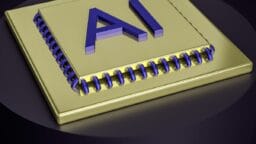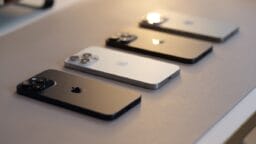The perennial challenge of maintaining a smartphone’s battery life is a common predicament in today’s digital age.
For many, the smartphone has become indispensable, a fact we often hesitate to acknowledge.
From connecting with friends via social media to managing professional communications and online transactions, our reliance on these devices is profound.
Therefore, when the battery begins to deplete at an accelerated pace, it raises legitimate concerns, occasionally even endangering our safety.
What if the battery fails while navigating or during an urgent call?
Although portable chargers serve as a temporary solution, the core issue frequently lies in a battery’s diminishing capacity to retain charge over time.
While it is tempting to attribute this deterioration to heavy app usage or excessive screen time, the underlying causes are entrenched within the intricate chips and systems responsible for power management, as experts from Mouser, a prominent distributor of electronic components, elucidate.
Recently, they shed light on the reasons for accelerated battery drain and the optimal charge levels essential for sustaining battery health.
Understanding Battery Decline
According to Mark Patrick, Director of Technical Content at Mouser, each battery possesses a finite lifespan, typically accommodating around 500 to 800 full charge cycles.
“A charge cycle represents the full utilization of your battery’s capacity, whether consumed in one go or over fragmented intervals throughout the day,” he clarifies.
“Once those 500 to 800 cycles are exhausted, the battery’s proficiency in retaining charge commences a gradual decline.”Giving it 100 percent doesn’t necessarily apply to your phone’s battery.
“Thus, if you charge your device daily, you may exhaust your battery in as few as 500 days—under two years—accounting for that feeling of deteriorating performance.”
This rationale underscores a poignant truth: the more we use our smartphones, the more we inadvertently compromise their battery integrity.
Fortunately, adopting specific habits can profoundly enhance battery longevity.
Strategies to Enhance Battery Longevity
Maintain Charge Between 20% and 80%
Charging your device to full capacity, as well as allowing it to reach zero, constitutes undue strain on the battery.
According to Mark, the internal battery management systems are designed to safeguard against such adversities, but adhering to a charge range between 20% and 80% promotes healthier battery life. Contrary to popular belief, topping off to 100% may actually be detrimental over time.
Activate ‘Battery Saver Mode’
This mode curbs background activities, moderates visual effects, and decelerates non-essential processes to optimize power consumption when the device rests idle. It limits background data synchronizations, adjusts refresh rates, and may dim the screen, thereby allowing the hardware to maintain a low-energy state for extended periods. You can help your phone’s battery last longer.
Disable Smart Assistant Features When Necessary
Always-on functions, such as ‘raise to wake’ or voice assistants, rely on low-power sensors, including accelerometers and MEMS microphones.
The accelerometer detects minor movements, turning the screen on without physical input, while MEMS microphones continuously listen for activation words like ‘Hey Siri’ or ‘OK Google.’
Even though these sensors were engineered to consume minimal energy, their cumulative power draw can be significant. Disabling such features when not in use, especially overnight, mitigates unnecessary battery depletion.
Keep Software Updated for Optimal Energy Efficiency
Regular updates frequently enhance a phone’s local task management, reducing dependence on cloud synchronization, which in turn conserves battery power.
Avoid Using the Phone While Charging and Maintain a Cool Environment
Charging mechanisms, such as battery chargers and USB-C power controllers, are designed to prevent overheating during fast charging; however, using the device concurrently generates extra heat, which may adversely affect battery health. Keeping the device cool and minimizing use during charging supports better battery maintenance.
Utilize Certified Chargers and Cables
While Analog Devices’ power ICs regulate voltage and prevent overcharging for safe charging practices, subpar chargers may jeopardize the battery, damage internal circuitry, or, under severe conditions, result in overheating or even combustion.
Choosing certified accessories with proper safety measures is the most dependable approach to ensuring your device’s longevity.
Source link: Unilad.com.






